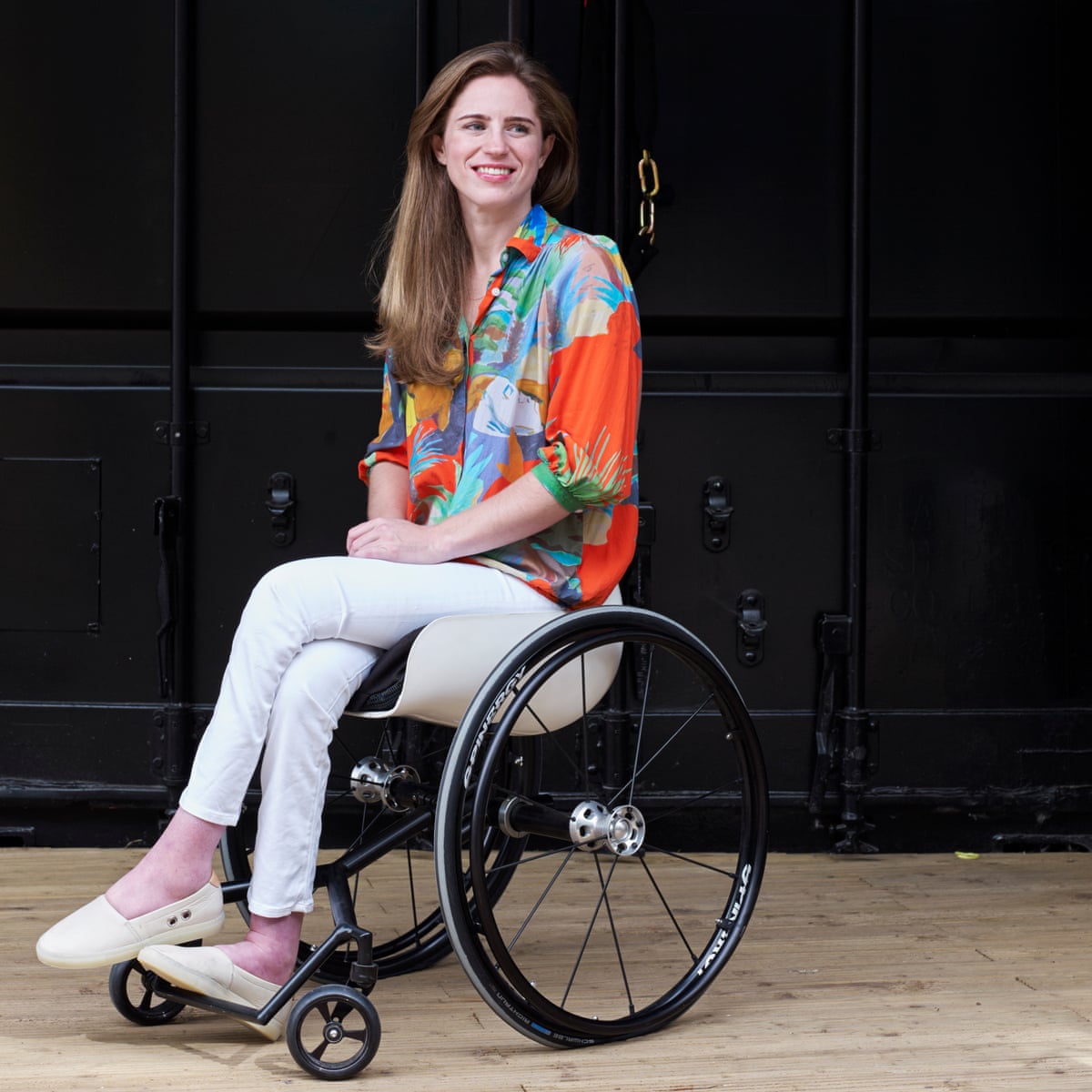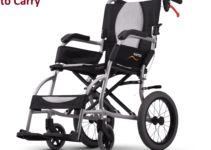Are you a paraplegic looking for the latest advancements in wheelchair technology? Then this is the right guide for you.
You will learn about the different types of wheelchairs that help you live life to its fullest. This article will provide you with the information and resources needed to make the best decision when it comes to buying your new mobility chair.

Wheel chairs are essential mobility devices for people with limited physical capabilities. It has been estimated that more than 6 million Americans use a wheelchair for their everyday transportation needs. Wheelchairs allow users the freedom to move around their home and other areas, such as stores and parks, without assistance. The technology available today to supplement a wheelchair has created new possibilities for users. This guide will focus on the different types of wheelchairs suitable for paraplegic individuals and the various assistive technologies that can be used to enhance their mobility.
Paraplegia is the partial or complete paralysis of the lower half of one’s body from either illness or injury. Paraplegic individuals may experience paralysis in both legs, or only one, as well as in some parts of the abdomen and chest area. Depending on the severity, paraplegic individuals may need a variety of assistive technologies and support services to help them maintain an independent lifestyle. This guide will provide an overview of common technologies available that can help paraplegic individuals adapt to their environment and improve their quality of life.
Definition of Paraplegia
Paraplegia is defined as the paralysis of both legs, parts of the body from the waist down. Paraplegia can be caused by injury, diseases such as polio or multiple sclerosis and some hereditary spinal diseases, or when parts of the spine are damaged or malfunctioning. The severity level of Paraplegia, as well as what bodies functions are affected by it, depend on which part of the spinal cord was injured.
The most common type of paraplegia is motor paraplegia, which is when sensibility is preserved but body movement and control below the point in injury is impaired. This can include but not limited to reduced balance, impaired reflexes and spasticity (abnormal muscle tone). Incomplete paraplegia can also occur due to illness or injury in which there may be more feeling present below a certain point in the body’s lower half and some independent mobility—however strength may still be limited.
In any situation, motorized wheelchairs offer individuals with lower limb deficiencies an opportunity to retain mobility with proper equipment tailored to their needs.
Wheelchair Types
Wheelchairs are available in a variety of styles that vary in size and features to accommodate the individual user’s needs. When selecting a type of wheelchair for a paraplegic individual, start by considering the level of independency desired as well as any physical limitations. The selection should also include consideration of the person’s mobility environment — indoors, outdoors or both – and any particular environmental conditions that may be encountered such as snow, mud or stairs. It is important to consider several aspects such as weight, strength capabilities and comfort when selecting or designing a wheelchair for the individual’s specific needs.
The following types of wheelchairs provide options for paraplegic individuals:
-Manual Wheelchair – Manual wheelchairs are operated solely by human power; they are generally lightweight to enable easy portability. This type of wheelchair often features folding frames which can help save space when transporting or storing them; various footrest options are also available on manual wheelchairs depending on the user’s preference. Some models feature adjustable foot plates which allow users with increased muscular abilities to move their feet closer together when transitioning from one position to another.
-Motorized Wheelchair – Motorized wheelchairs offer increased independency for those with limited upper body strength who cannot operate a manual chair comfortably or effectively due to physical impairments; some models offer standing capability which enables users to keep up with their peers more easily in social situations. This type of wheelchair may be powered by the user via joystick controls, sip-and-puff controls (a mouthpiece allowing control via exhaled breath), head switches, voice command systems, dynamic far sitting technology (DFST) chair frames or other specialized mechanisms unique to each model.
-Lightweight Wheelchair – Lightweight wheelchairs simplify transport as they are much easier and more comfortable to push than heavier manual wheelchairs; these chairs are specially designed with ultra light frames that provide greater maneuverability and better performance than heavier models without compromising stability and reliability; most lightweight wheelchairs collapse for transport purposes although some models feature heavy-duty frames designed for long term use. Specialty ultralight chairs featuring standing capabilities are also available depending on your budget constraints.
Manual Wheelchairs
Manual wheelchairs are the original wheelchairs, and despite many advances in technology and materials, they remain a popular choice for individuals needing mobility assistance. Manual wheelchairs typically have push handles at the rear of the frame, allowing a caregiver to provide additional propulsion when needed. When operated by an individual with some upper-arm strength and endurance, manual wheelchairs can be an affordable solution that does not require recharging.
Different types of manual wheelchairs are available to meet different user requirements, such as lightweight and folding options that can be easily transported in a car or on public transport, adjustable width options and self-propelling models for greater independence. To ensure comfort when seated for long periods of time, manual wheelchairs usually come with cushioned armrests and various seat-cushion options that suit individual needs.
Power Wheelchairs
Power wheelchairs are electric-powered wheelchairs that offer precise and sophisticated levels of control, allowing greater independence for paraplegic individuals. They provide adjustable seating positions, enabling the user to move around in tight spaces.
There are three different types of power wheelchairs: rear-wheel drive, front-wheel drive and mid-wheel drive models.

Rear-Wheel Drive Wheelchair: This type of power wheelchair is designed with two large back casters that extend out from the rear of the seat and slightly behind it, giving extra stability on inclines. It typically offers a longer battery range than its alternatives.
Front-Wheel Drive Wheelchair: This type of power wheelchair is designed with two small caster wheels situated at the front of the seat allowing for a more versatile turning radius than its rivals. These chairs can negotiate tight corners when navigating a home setting or crowded public area.
Mid-Wheel Drive Wheelchair: Also known as center-wheel drive, this type combines both strength and maneuverability from both its forerunner models mentioned above – making it one of the most sought after power wheelchairs amongst paraplegic individuals looking for an optimal combination of mobility and accessibly features in their chair’s design.
III. Factors to Consider When Choosing a Wheelchair
Choosing the right wheelchair for a paraplegic individual is essential to their comfort and mobility. When making a selection, there are a variety of factors to consider. Here are some key points to keep in mind:
Size – Wheelchair size affects how well it can maneuver in tight spaces, its agility and its ability to support the user’s body weight. Before purchasing, measure the user for the seat width and depth and double-check that these measurements match the chosen chair model. For adults, a standard wheelchair should have a seat width of 16-20 inches and depth of 16-18 inches.
Customization – Personalizing your wheelchair involves tailoring specific components such as footrests, armrests, back support, seat upholstery and more. Make sure any chosen modifications suit your individual needs not just today but into the future. Many of these customizations like reclining back systems CAN make transfering much easier with minimal nursing staff help required down the line; it’s important to look ahead when making decisions now.
Type – Understand your options when it comes to manual versus powered wheelchairs; explore additional features like stability control that can allow you do more with greater autonomy while reducing risks associated with tougher terrain or inclines in outdoor settings.
Price – Be sure you are aware of all potential costs involved in buying and maintaining a wheelchair so you understand potential long-term financial commitments before making any decisions about purchase or hire orders.. If you require use for extended periods of time consider hiring rather than leasing or buying so that servicing maintenance is included from an experienced supplier if required..
Level of Paraplegia
A complete guide to wheelchair technology for paraplegic individuals should consider the level of paraplegia each individual experiences. By understanding their level of impairment, the user can identify the most suitable type of wheelchairs and carrying mechanisms available.
The characteristics of paraplegic individuals can be divided into four different levels as follows:
- Level 1: Paraplegia with some mobility. At this level, individuals have some degree of trunk control and movement in one leg or both legs. They are able to stand and walk short distances with limited assistance from another person or an assistive device (such as a cane).
- Level 2: Paraplegia Without Mobility. Individuals at this level do not have significant mobility in either leg and cannot stand without assistance from someone else or a device (e.g., braces, crutches). The individual may have slight sensation or movement in their lower body, but it is not substantial enough to result in weight-bearing abilities or independent mobility on their own.
- Level 3: Quadriplegia with Partial Mobility – This type of impairment is characterized by some degree of trunk control and limited movement in all four limbs including paralysis from the waist down with possible partial paralysis in one arm as well. Limited transfers using assistance from another person may be possible for these individuals such as slide boards for showering/bathing purposes and tilt-in-space wheelchair adaptations to manage positioning needs when sitting for an extended period of time are necessary for safe use throughout a given day.
- Level 4: Quadriplegia without Mobility – This type represents the most severe level where an individual has no sensation nor voluntary control over any parts of his/her body below the neck. These individuals will require specialized wheelchairs that meet certain criteria such as powered measurements, specific seating needs, improved pressure relief, soft tissue/joint protection, etc…. Moreover, they will require specialized lifting/carrying mechanisms to ensure safety when transferring them between beds, chairs, etc….
Lifestyle
- Lifestyle: The type of chair selected should reflect the lifestyle of the user, as each chair provides unique benefits based on a person’s individual needs and preferences. For users who are more active, there are wheelchairs specifically designed to provide superior maneuverability and stability. For individuals who need to travel frequently, compact wheelchairs with easily foldable frames and lightweight parts may be best suited for their needs. Wheelchairs designed for sports may be ideal for users who wish to maintain or improve their fitness level. Battery-powered chairs can offer greater speed than manual versions and can help those with limited strength or stamina perform activities that would take them longer in a manual chair. There are other features such as reclining back supports, adjustable seat heights and heavy duty tires that may be beneficial depending on the user’s lifestyle.
Budget
When beginning to research wheelchair technology for paraplegic individuals, it is important to create a budget and keep track of costs associated with the purchase and regular maintenance of the wheelchair and any necessary navigation aids. Different options are available when choosing a wheelchair depending on individual preference, lifestyle and budget.

When creating a budget, there are several areas of expenditure that should be taken into consideration such as the purchase price of the wheelchair itself, extra features such as advanced navigation systems or adjustable seat cushions, any installation fees associated with adding new features to the chair, preparation costs by trained professionals (whenever necessary), any relevant taxes and/or shipping charges, required accessories such as larger batteries or conversions if available.
Moreover, there are certain ongoing expenses to factor in as well including repairs from wear-and-tear or damage due to heavy usage; regular maintenance checks by qualified technicians; regular battery changes; minor adjustments like readjustment of posture; replacement parts for obsolete components etc. All these expenses should be taken into consideration when creating a budget for purchasing wheelchair technology for paraplegic individuals.
Conclusion
In conclusion, technology has brought forth amazing innovations to improve the quality of life for paraplegic individuals. Despite technological advances, it is important to remember that each person’s needs and lifestyle surrounding wheelchair use is different, so the selection of a wheelchair and its features should be based on their personal needs.
Whether it is an electric or manual wheelchair with power assist features, adjustable seating options, or multifunctional capability — it is important to seek the guidance of an experienced health care professional who can help identify the best wheelchairs for an individual’s needs and lifestyle. Additionally, individuals may want to talk to their insurance providers before investing in some of these wheelchairs and technologies as many providers are often willing to cover certain costs associated with such medical equipment.
Ultimately, there are a variety of wheelchairs on the market today that provide persons with paraplegia amazing functional potential in achieving positions felt unachievable just a few years ago.
FAQs
What technology helps paraplegics walk?
Exoskeletons and functional electrical stimulation (FES) are technologies that can help paraplegics walk.
What type of wheelchair do paraplegics use?
Paraplegics often use manual or electric wheelchairs, depending on their individual needs and preferences.
What equipment does a paraplegic person need?
A paraplegic person may need equipment such as a wheelchair, transfer board, pressure relief cushion, and home modifications to make their environment more accessible.
How do paraplegics use a wheelchair?
Paraplegics use a wheelchair by positioning themselves in the seat, using the hand rims to propel the wheelchair forward, and adjusting the footrests to ensure proper leg support.
Is there a new device for paralyzed?
There are several new devices being developed for paralysis, including exoskeletons, brain-computer interfaces, and neural implants.
What new technology restores movement after spinal cord paralysis?
Neuroprosthetics and spinal cord stimulation are two new technologies that show promise for restoring movement after spinal cord paralysis.
How VR is helping paraplegics walk again?
Virtual reality (VR) is being used in rehabilitation to help paraplegics regain mobility and improve their balance and coordination.
What is assistive technology for spinal cord injury?
Assistive technology for spinal cord injury includes devices and equipment that help with mobility, communication, and daily living activities, such as wheelchairs, communication aids, and home modifications.
What is the best way to move a paralyzed person?
The best way to move a paralyzed person depends on their individual needs and abilities, but it typically involves using a transfer board or lift to ensure their safety and comfort.
Can paraplegics walk with prosthetics?
Paraplegics may be able to walk with prosthetics, depending on the level and severity of their paralysis, as well as their overall health and fitness level.
See Also-
- Best walker wheelchair combo 2023
- Best transport wheelchair 2023
- Best reclining wheelchair 2023
- Best lightweight electric wheelchair 2023
- Best all terrain wheelchair 2023


